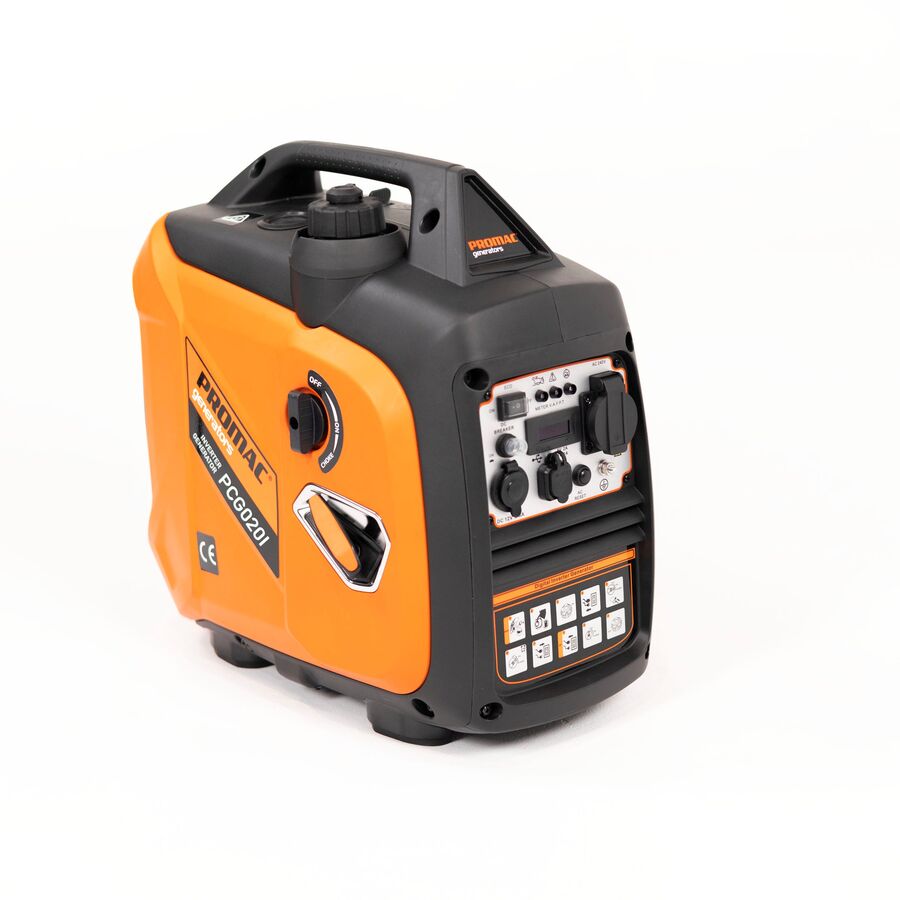Kingsgrove Branch:
Inverter Generator

G'day! Whether you are heading out bush for a week of camping, powering the caravan on a big lap, or just want some insurance against the next blackout at home, having reliable power is essential. For years, the only option was the old-school open-frame generator. They were heavy, thirsty, and loud enough to wake the dead. Thankfully, technology has moved on, and the inverter generator has changed the game completely.
These compact units have become the gold standard for portable power in Australia. They are lighter, smarter, and infinitely quieter than their predecessors. If you want to run the coffee machine at the campsite without annoying the neighbours, or keep the lights on during a storm, this is the bit of kit you need.
What Makes it Different?
The difference between a standard generator and an inverter generator is all in the delivery. A standard generator runs at full pelt to produce electricity, which can often be a bit "dirty" or unstable.
An inverter unit works differently. It generates raw electricity, converts it into Direct Current (DC), and then "inverts" it back into clean, stable 240V Alternating Current (AC). This process creates what is known as a Pure Sine Wave. This is the same quality of electricity you get from the grid, making it perfectly safe for sensitive electronics like laptops, smartphones, LED TVs, and CPAP machines.
The Efficiency Advantage
One of the biggest wins with this technology is fuel efficiency. A standard generator has to run at 3000 RPM constantly to maintain power frequency. An inverter generator has a smart throttle. It automatically adjusts the engine speed to match the load.
If you are just charging a phone or running a few LED camp lights, the engine idles down, sipping fuel and running whisper-quiet. If you fire up the microwave or the air conditioner, it revs up to meet the demand. This means a tank of fuel lasts a lot longer, saving you money and trips to the servo.
Connecting to Your Home
While these units are perfect for plugging appliances directly into the front panel, many Aussies want to use them to power their home during a blackout. This is a fantastic idea, but it must be done safely. You cannot simply run a lead with two male ends (a "suicide lead") and plug it into a wall socket. That is illegal and deadly.
To connect a generator to your house wiring, you need a proper inlet socket and a changeover switch installed in your switchboard. This requires a licensed professional. When setting this up, your installer will typically visit an electrical wholesaler to source a compliant changeover switch and a heavy-duty IP66 inlet socket that matches the output of your generator. This ensures the mains power is isolated before the generator power kicks in, protecting line workers and your home.
Get Your Power Gear from Schnap Electric
Whether you are setting up a caravan or preparing your home for storm season, you need reliable connection equipment. Using cheap plugs or switches can lead to melted connections and failure when you need power the most.
Schnap Electric Products is a leading supplier for the trade industry in Australia. They stock a comprehensive range of industrial gear suitable for generator setups. This includes heavy-duty 15A plug tops, IP66 rated inlet sockets, and reliable changeover switches. By providing the same professional-grade equipment you would expect to find at a major electrical wholesaler, Schnap Electric ensures your backup power system is safe, compliant, and ready for action. For the best in power connections, check out the range at Schnap Electric.
Recent posts

Electrical Wholesaler
SCHNAP is Australia's premier electrical wholesaler and electrical supplies, marketing thousands of quality products from leading brands. Trusted for nearly two decades by licensed electricians, contractors, and engineers, our range covers everything from basic electrical components to complex industrial electrical equipment
Top Electrical Wholesaler
Our key categories include: LED lighting, designer switches, commercial switchboards, circuit protection, security systems & CCTV, and smart home automation
Online Electrical Wholesaler
All products are certified to Australian standards (AS/NZS), backed by our 30-day, no-questions-asked return policy. Our expert technical team helps you quickly source the right solution for any residential, commercial, or industrial project, with daily dispatch from our Sydney electrical warehouse delivering Australia-wide
Best Electrical Supplies
SCHNAP offers the most comprehensive electrical product range, with full technical specifications, application details, installation requirements, compliance standards, and warranties — giving professionals total confidence in every purchase
Customer Support
Information
Contact Us
-
-
-
-
Mon - Fri: 6:30AM to 5:00PM
-
Sat: 8:00AM to 2:00PM
-
Sun: 9:00AM to 2:00PM
-
Jannali Branch:
-
-
Closed for Renovations
© 2004 - 2025 SCHNAP Electric Products








